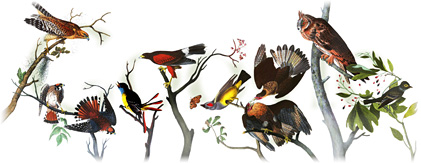Posted by Archi Sarkar, Books and Online News AssociateOn the occasion of
National Poetry Month, we thought it would be a good time to walk down memory lane recollecting a few stellar contributions to English poetry over the ages.
Great poetry endures the test of time and is ever-fresh in the mind, like
Wordsworth's famed "Daffodils." Oftentimes one unknowingly quotes from it in everyday conversation, like Shelley's renowned line —
"If winter comes, can spring be far behind?"The dawn of the
Romantic movement was among the glorious periods in the history of English poetry. It spanned generations of exceptional poets, whose profound literary influences (in both lyric and thought) reverberated even years later through the works of literary stalwarts like
Alfred Lord Tennyson,
Matthew Arnold,
Robert Browning,
pre-Raphaelite Dante Gabriel Rossetti,
T.S. Eliot,
George Bernard Shaw and
William Butler Yeats.
In the late 18th century, scholarship in ancient
Greek and
Roman literature was highly revered across Europe. During this
Neo-classical period, poets were trained to be well-versed with the "
Western canon." They had been schooled to create pieces that were richly steeped in tradition — a social attempt to regain a glorious era of poetry that had once been.
Ironically, it was also during this time that six passionate men altered the historical fabric of
English poetry forever. In an age where poets were expected to steer clear of subjective originality within their compositions, these
Romantic poets indulged in self-expression that at times even bordered on the mystical or supernatural.
Here's a celebration of their search for defining the meaning of life that in turn inspired their masterpieces.

An unsung poet-painter during his own lifetime, William Blake became the seminal artistic consciousness behind the pre-Raphaelite movement years after his death. Blake's masterpiece
"The Marriage of Heaven and Hell" is a symbolic expression of his search for the perfect union, which he aspired to create by combining two equal yet opposing concepts within one impression.

Poet Laureate William Wordsworth was one of the founders of the Romantic movement. He published
Lyrical Ballads jointly with Samuel Taylor Coleridge, as an experiment to create poetry about human emotions from everyday language, so that people from all social classes could enjoy them. Through poems like
"Tintern Abbey" and
"Lucy Gray," Wordsworth attempted to illustrate his new theory on perfect poetry.

A member of the
Lake Poets, and a collaborator on
Lyrical Ballads, Samuel Taylor Coleridge was not only a renowned literary critic and an authority
on Shakespeare, but also an accomplished poet. Recurring supernatural themes in
"The Rime of the Ancient Mariner," "Kubla Khan" and
"Christabel" reflect his journeys in search of mystical ideals.

Lord Byron, painted by Thomas Phillips, in Albanian headdress and garb
(Source:
LIFE Magazine)
Lord Byron
and his search for honor
Born an aristocrat gifted with poetic prowess, Lord George Gordon Noel Byron adeptly succeeded Coleridge and Wordsworth in the Romantic movement. Byron’s legendary preoccupation with his quest for honor, as evidenced in
"Don Juan" and
"Childe Harold's Pilgrimage," eventually led to his enlistment in the Greek army. He fought for freedom against the Ottoman empire and died a hero. Lady Caroline Lamb in a letter to her friend Lady Morgan described him as
"mad—bad—and dangerous to know."
Portrait of Percy Bysshe Shelley (1792–1822)
(Source:
LIFE Magazine)
Distinguished for his lyrical acumen, Percy Bysshe Shelley was a poet and a dramatist who also had a significant literary influence in the creation of
Frankenstein. His works
"The Mask of Anarchy" (the poem that inspired Mahatma Gandhi),
Prometheus Unbound,
"Queen Mab" and
"The Revolt of Islam" bear testament of Shelley's affinity towards politics and his constant search for an ideal world.

John Keats
and his search for truth
Although John Keats actively wrote poetry only for six years, he is still regarded as one of the finest poets in English literature.
"Ode on a Grecian Urn," "La Belle Dame Sans Merci" and
"Lamia" portray Keat's fascination for discerning the truth of life in relation to its beauty. He famously wrote:
"Beauty is truth, truth beauty,"—that is all
Ye know on earth, and all ye need to know.






